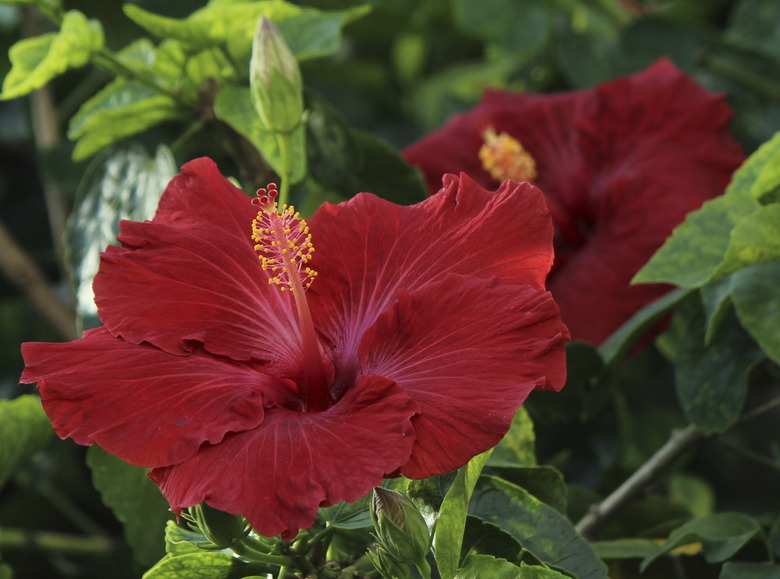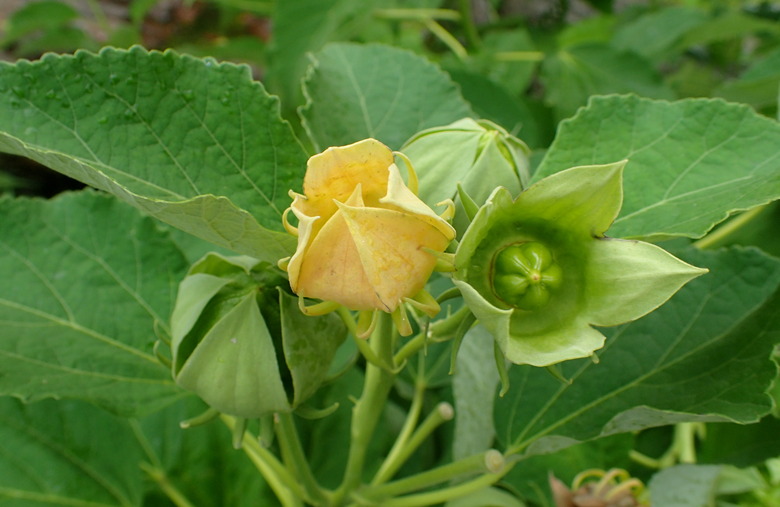Why Are My Hibiscus Leaves Turning Yellow?
Hibiscus (Hibiscus spp.) is an ornamental flowering shrub in the mallow family. Hibiscus leaves yellowing, which is known as chlorosis, is a common problem in these plants. **This condition can be caused by cold temperatures, lack of fertilizer or pest feeding.**
Native Hibiscus Species
Approximately 35 species of hibiscus are native to the United States, including the hardy hibiscus (Hibiscus moscheutos, zones 5 to 9), which grows in wet areas, like marshes and river banks in the eastern and southern parts of the country. The flowers of this species are white or pink and have a dark red center, or eye.
Also native to swamps and other wet habitats in the southeastern U.S. is the rose mallow (Hibiscus lasiocarpos, zones 5 to 9), which has white flowers and a magenta eye.
Nonnative Hibiscus Species
A popular nonnative species is the Chinese hibiscus (Hibiscus rosa-sinensis, zones 9 to 11), which is a tropical species often grown outside of its hardiness range as an annual. The rose of Sharon (Hibiscus syriacus, zones 5 to 8) is a hardier nonnative option, though its tendency to self-seed has made it an invasive species in some parts of the country.
Hibiscus Leaves Turning Yellow
In the spring and fall during periods of transition from one season to the next, yellow leaves on hibiscus plants are completely normal. However, during the growing season, chlorosis could be caused by other factors. Let's look at some of the reasons for leaves on hibiscus turning yellow.
Lack of Fertilizer
Hibiscus plants require plenty of fertilizer in the spring and summer in order to look their best. Yellow leaves on hibiscus plants could be an indication that the plant isn't receiving enough nutrients. To avoid this problem, feed your hibiscus plants with a balanced 10-10-10 fertilizer during the growing season.
Hibiscus that are grown in containers tend to need more fertilizer than those grown in the ground. Outdoor container plants usually need more feeding than indoor container plants. Hibiscus plants should not be fertilized in the winter, however.
Pest Infestations
Leaves on a hibiscus turning yellow may in some cases be the work of soft-bodied insect pests known as aphids, which consume plant sap.
Armed with mouthparts that allow them to tear into leaf tissue, aphids typically take up residence on the underside of hibiscus foliage. Their feeding can cause yellowing of the leaves. You can use an insecticidal soap safe for hibiscus to keep these pests in check.
Environmental Changes
Hibiscus plants are very sensitive to changes in their environment. Drastic shifts in air temperature or a sudden increase or decrease in the soil's moisture level, for example, can lead to chlorosis in hibiscus.
If exposed to cold temperatures, the lower leaves of hibiscus plants may also turn yellow and fall off the plant.
References
- University of California Statewide Integrated Pest Management Program: Hibiscus
- University of Kentucky: Hibiscus
- University of Minnesota Extension: Hibiscus
- University of Florida IFAS Extension: Hibiscus
- Missouri Botanical Garden: Hibiscus moscheutos
- Clemson Cooperative Extension: Hibicus
- Missouri Botanical Garden: Hibiscus lasiocarpos
- Missouri Botanical Garden: Hibiscus rosa-sinensis
- Missouri Botanical Garden: Hibiscus syriacus

